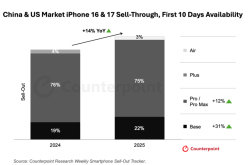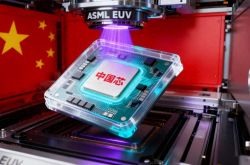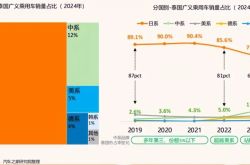The Profound Significance of Humanoid Robots in a Marathon: An In-Depth Exploration and Standard Setting
![]() 04/14 2025
04/14 2025
![]() 599
599

This is not a mere competition or arena, and the crown of victory does not solely belong to the first humanoid robot across the finish line, but to every robot that stands on the field.
Editor: Di Xintong
Due to weather factors, the Beijing Yizhuang Half Marathon has been postponed, yet the anticipation for the humanoid robot race lingers in the air, awaiting its moment.
Fortunately, the technological feast is merely delayed, not canceled. On April 19, several humanoid robot teams will join humans on the track for the 21.0975-kilometer race. This race serves not only as an extreme test bed for bionic bodies but also as the first tangible manifestation of the future landscape of human-machine coexistence.
This is not a competition or an arena; the crown of victory is bestowed not solely on the first humanoid robot to cross the finish line, but on every robot that participates.
The industrial value of this unique race is threefold: first, it addresses the industry's "lack of evaluation standards" by exploring quantifiable technology benchmarks through unified, objective scenarios and horizontal comparisons under external risks; second, it explores commercialization pathways for humanoid robots in complex environments through stress tests and scenario validation; third, this stage is not exclusive to mature market enterprises but also includes university research institutions, fostering a dialogue between the two, subtly enabling mutual empowerment during the competition, accelerating the transformation of university research achievements, and building a "channel" for the long-term development of humanoid robots.
After all, the somewhat clumsy humanoid robots emerging from university laboratories today on the racecourse may become the next "Unitree Robotics."
This technological race is imbued with humanized nuances. Just as human participants meticulously choose their equipment, comparing the comfort of running shoes and clothing to enhance performance, humanoid robots also carefully select their gear. To mitigate wear and tear on the robot body caused by road running, some participating teams have even equipped their humanoid robots with special running shoes.
Previously, when STAR1 of Xingdong Jiyuan ran in the Gobi Desert, the developers also equipped it with a pair of sneakers. When two identical humanoid robots raced, the one wearing shoes had a clear advantage.
It is evident that despite their steel bodies, humanoid robots share many characteristics with humans. Just as the human knee's meniscus is stressed during prolonged running, the joint modules of humanoid robots can also overheat under rigorous endurance tests. Therefore, we should not judge them harshly and should not rush to criticize their mistakes. These technological challenges, tinged with human life experiences, outline the inevitable path for humanoid robots to transition from the laboratory to mass production.
As the starting gun echoes across the Yizhuang skyline, this human-machine race transcends the realm of sports competition. It serves as a touchstone for cutting-edge technology and a preview of production relations in the intelligent era. The boundaries between winning and losing blur, leaving only the reflections and co-evolution of humans and machines clearly visible.
The Ultimate Test of Body and Motion Control
To understand what capabilities humanoid robot marathons aim to test, let's first examine the marathon's race format.
The course, spanning over 21 kilometers, begins at the South Gate of the first phase of Nanhaizi Park and concludes at the National Information Innovation Park. It encompasses various complex road conditions, including flat asphalt roads, cracked sections, long gentle slopes, stone paths, and grasslands. Terrain-wise, it tests the obstacle avoidance ability and stability of humanoid robots in complex environments.
To delve deeper, achieving precise movement on complex terrain akin to walking on flat ground necessitates real-time analysis, decision-making, and path planning by the "brain" perception system; the "cerebellum" executes these decisions, mobilizes the joints throughout the body, and adjusts in real-time. Currently, industry technical routes to achieve these capabilities vary. Some manufacturers utilize three-dimensional models and preset programs for walking; others integrate LiDAR with binocular vision perception systems to enhance real-time perception and decision-making; another route is the camera depth map solution, which acquires terrain representations based on neural network methods through depth maps, but this approach is not mainstream and still in the experimental stage.
For the 21-kilometer race, after careful consideration, the organizers set a cut-off time of three and a half hours. The cut-off time for human half-marathon participants is mostly around three hours, with the fastest runners breaking the one-hour barrier. This race format tests the endurance of humanoid robots. Currently, most humanoid robot manufacturers on the market offer an endurance of around four hours. However, the marathon is a stress test, and continuous operation for an extended period is bound to compromise endurance to some extent.
To address this, the competition allows humanoid robots to complete the race by changing batteries or relay running, but each battery change incurs a 10-minute penalty. Additionally, the frequency of battery changes will affect the overall score.
From the starting gun to crossing the finish line, humanoid robots must execute approximately 250,000 precise joint movements during the three and a half-hour journey. This requires humanoid robot companies to invest in body structure design, solve joint heat dissipation issues, and avoid overheating that restricts the gait of humanoid robots.
The humanoid robot marathon is merely a prelude. This year, Beijing will adopt the "one race, one conference" approach to comprehensively showcase the capabilities of humanoid robots. The "one conference" refers to the World Humanoid Robot Games, featuring nearly 20 events, including track and field, football, free gymnastics, and application scenarios, fully demonstrating the technological progress and capability enhancements of humanoid robots in athletic performance, intelligent interaction, and scenario application.
The 21-kilometer journey from Nanhaizi Park to the Information Innovation Park is not merely a physical displacement but also a vertical climb in the technological hierarchy: the cracks on the asphalt road conceal the profound significance of environmental perception, the gentle slope and stone path intertwine into the Nine Chapters on the Mathematical Art of Motion Control, and that silent grassland serves as the optimal stress test field for balance algorithms.
What Matters is Not Crossing the Line but Trying
Through horizontal comparisons, humanoid robots of diverse forms emerge from their respective stages, offering a glimpse into the true capabilities of various humanoid robots under identical conditions. Deep technological exploration reveals the current technological peak and average values, facilitating the establishment of quantifiable and clearer data benchmarks for newcomers.
Although the marathon has not yet commenced, road tests are already underway. Humanoid robot manufacturers such as Beijing Humanoid Robot Innovation Center, Songyan Robotics, Qingxin Yichuang, and others have arrived, with humanoid robots ranging in height from 1.2 to 1.8 meters beginning to undergo racecourse tests.
According to on-site road test revelations, Tiangong, a humanoid robot from the Beijing Humanoid Robot Innovation Center, takes less than five minutes to change a battery. The first humanoid robot completed its initial test in 2 hours and 52 minutes; Qingxin Yichuang tested its humanoid robot's ability to climb uphill and downhill, as well as its endurance and stability during running.
Based on the specific data of each participant:
Magic Atom's humanoid robot "Xiaomai," standing at 174 centimeters tall and weighing approximately 60 kg, can adapt to various environmental terrains such as roads, runways, grasslands, and hillsides, with a continuous running speed of 2 m/s. Its walking and running gaits are already close to those of humans. In March, Xiaomai was already preparing for the race in Suzhou and had also tested its load-bearing walking ability. According to Magic Atom personnel, if Xiaomai moves forward with walking actions, its endurance can reach four hours. However, due to the greater energy consumption of running, it will need to change batteries twice to complete a race of about 21 kilometers.

Image source: Magic Atom
CASBOT SE from Lingbao CASBOT has already achieved straight-knee walking and won third place in the humanoid bionic robot racing track at the 2024 Zhongguancun Bionic Robot Competition finals using this method. Recently, outside the venue of the 2025 Zhongguancun Forum, CASBOT SE showcased its dancing skills outdoors, from grasslands to cement and asphalt roads, with every movement demonstrating its ability to perform robust walking, running, and even dancing actions in complex terrains.
Leju Robotics' "Kuafu," standing at 1.7 meters tall with 22 degrees of freedom throughout its body, can achieve stable and high-precision actions such as Tai Chi and dancing on flexible carpets and other complex environments, and can also navigate various complex terrains such as cement and asphalt roads; its speed is 5 km/h. In January of this year, Leju had already completed the delivery of 100 full-size humanoid robots.
The "Tiangong" robot from the Beijing Humanoid Robot Innovation Center, standing at 1.8 meters tall, has demonstrated continuous climbing of over a hundred steps without bumping or missing steps, can adapt to running on complex terrains, with a maximum speed of up to 12 km/h and an average running speed of 6 km/h. For Tiangong, this racecourse is not unfamiliar. Last year at the Beijing Yizhuang Half Marathon, "Tiangong" blessed the runners at the starting line and crossed the finish line alongside them.
Songyan Robotics' N2 robot stands at 1.2 meters tall and weighs 30 kg. It took three weeks to master the backflip and has completed a test mileage of over 100 kilometers.
Through stress tests in unified scenarios, an objective yardstick for technology assessment has been established; through the innovative model of school-enterprise collaboration, the transformation link between scientific research and the market has been bridged; and through the concrete practice of human-machine coexistence, a new annotation has been provided for production relations in the intelligent era.
When humanoid robots cross the marathon finish line, the industrial marathon of the intelligent era has just sounded its starting gun. There are no true losers in this competition; only those who continue to evolve can lead the way—whether it be the machines or the human wisdom behind them.








